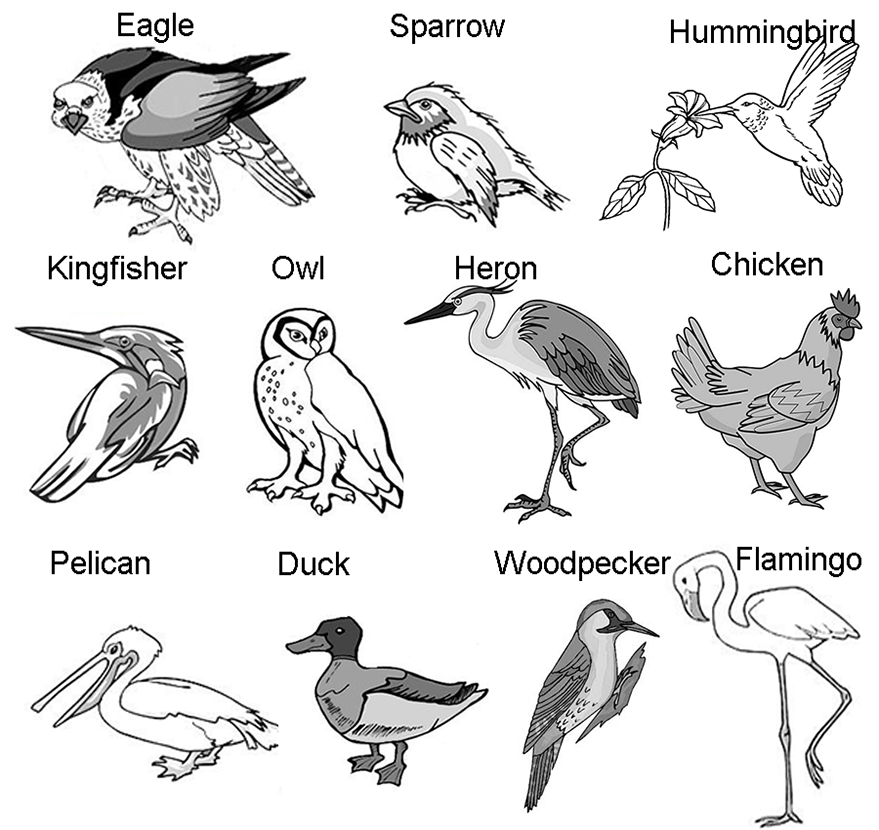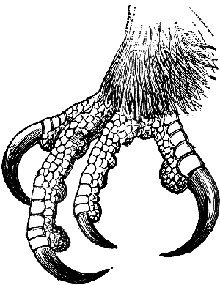What Does a Bird's Beak Tell You About Its Diet?


Bird |
Type of Feet |
Type of Beak |
Probable Diet |
Probable Habitat |
| Chicken | ||||
| Duck | ||||
| Eagle | ||||
| Sparrow | ||||
| Flamingo | shrimp | |||
| Heron | ||||
| Kingfisher | ||||
| Owl | ||||
| Pelican | ||||
| Hummingbird | ||||
| Woodpecker |
Beaks
Short and thick - seed cracking
Long and thin, slightly curved - eating nectar
Strong, chisel like - drilling
Sharp, curved and pointed - tearing flesh
Long and flattened - straining algae and plants
Spear shaped - spearing fish
Feet
3 toes in front, 1 behind - perching
2 toes in front, 2 behind - climbing
Powerful curved talons - grasping prey
Webbed - swimming
Long and thin - wading
Thick and stout - running

Analysis
1. What features of a hummingbird make it adapted for its style of feeding?
2. Imagine an ideal flying predator. What type of beak and feet would it have?
3. Different birds may have similar beaks and diets. Loons, herons, and kingfishers, for instance, all have long sharp pointed beaks for spearing fish. Their feet, however, are quite different. Describe how the loon, heron, and kingfisher differ in the method by which they hunt for fish (using their feet to help you answer.)
4. Owls have large eyes that enable it to see well at night. Both the hawk and the owl hunt similar things: small rodents or snakes. How do the hawk and the owl avoid competing with each other?
5. In the two previous questions, you were asked to analyze how birds reduce competition with each other when they hunt similar prey and live in similar habitats. This idea among ecologists is known as the "Competitive Exclusion Principle" which suggests the no two species can occupy the same NICHE. Use your book other other resources to define the word: niche and provide examples from this activity of a bird's niche.
You can also use this Google Slides document which shows photos of these birds and video clips.

